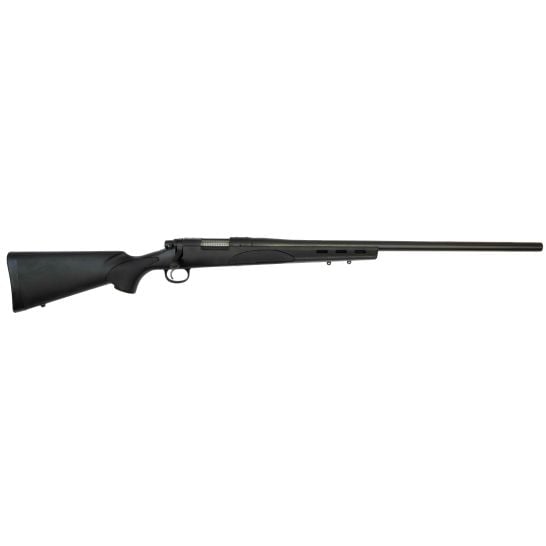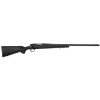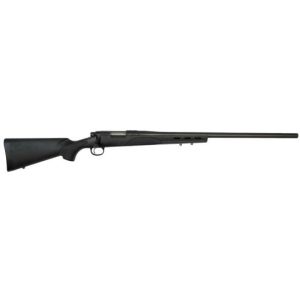Remington 700 ADL Varmint .223 Remington Bolt Action Rifle, Matte Black – R85417 For Sale
$630.99
The Remington 700 ADL Varmint .223 Remington Bolt Action Rifle, Matte Black – R85417, combines affordability with high performance, making it ideal for serious hunters. Its cost-effective ADL configuration includes an internal box magazine, enhancing both economy and efficiency. The heavy contour barrel ensures exceptional accuracy and stability, perfect for challenging hunts. Suitable for various varmint calibers, this versatile rifle offers reliable performance and precision. Its matte black finish adds stealth and durability, positioning it as an essential piece of equipment in any hunter’s collection.
Is the Remington 700 ADL discontinued?
Yes, the Remington 700 ADL has been discontinued.
What does ADL mean on a Remington 700?
On a Remington 700, “ADL” stands for “Average Deluxe.” It refers to a model variation of the Remington 700 series of bolt-action rifles, which are known for being more basic and having fewer features compared to the more advanced versions like the BDL (Better Deluxe). Specifically, ADL models typically lack a hinged floorplate for the magazine, meaning that they have a blind magazine and rounds must be loaded and unloaded from the top of the rifle’s action.
What is the rate of twist on a Remington 700 ADL varmint?
The Remington 700 ADL Varmint typically has a rifling twist rate of 1 in 12 inches. This rate is well-suited for stabilizing lighter varmint bullets. However, it’s always a good idea to verify the specific twist rate for the model and production year you are interested in, as variations might occur.
What is the difference between a 700 ADL and SPS?
The key difference between a 700 ADL (Address Domain Line) and SPS (Switching Power Supply) lies primarily in their functionalities and applications:
1. **700 ADL (Address Domain Line)**:
– **Functionality**: In computing and telecommunications, an Address Domain Line typically refers to a system or architecture dealing with addressing, routing, and management of data within a network.
– **Application**: ADL systems are primarily used within network infrastructure to manage and route data. It’s more about the logical organization of how data is handled across a network.
– **Usage Context**: It’s a technical term generally used in the context of network design, data management, and telecommunications infrastructure.
2. **SPS (Switching Power Supply)**:
– **Functionality**: A Switching Power Supply converts electrical power efficiently using a series of electronic components. It switches power on and off rapidly to regulate voltage output.
– **Application**: SPS units are commonly used in a variety of electronic devices, including computers, chargers, LED drivers, and other appliances to provide stable power supply with high efficiency.
– **Usage Context**: It relates to electronics and electrical engineering, particularly in contexts where energy efficiency and size are crucial factors, such as consumer electronics and industrial applications.
The primary distinction is in their purpose and fields of use: ADL is related to data routing and network management, whereas SPS deals with power conversion and electrical engineering.
Which is better Remington ADL or BDL?
Determining whether the Remington ADL (A Deluxe) or the Remington BDL (B Deluxe) is better depends on your specific needs and preferences as both are configurations of the Remington 700 rifle series.
– **Remington ADL**: This model is typically more affordable and has a simpler design. It generally features a blind magazine (no floorplate) which can make it lighter and less expensive but can also make unloading more tedious. It is a good choice for budget-conscious buyers or those who prefer simplicity.
– **Remington BDL**: This model is usually more expensive and includes additional features such as a hinged floorplate for easier unloading, a more polished finish, and upgraded stock materials. It’s often preferred by those looking for more convenience and aesthetic appeal.
If budget and simplicity are top priorities, the ADL might be the better choice. If you’re willing to spend a bit more for added features and improved convenience, the BDL could be the way to go.
What is the defect of the Remington 700?
The defect associated with the Remington 700 rifle is primarily related to its trigger mechanism, specifically the Walker trigger design. This design flaw can cause the rifle to discharge unintentionally without the trigger being pulled. Concerns about this defect have been raised over the years, leading to safety issues and numerous lawsuits. These unintentional discharges are often attributed to debris or other factors affecting the trigger mechanism’s performance. As a response, Remington has issued recalls and offered replacement trigger mechanisms to address these safety concerns.
What is a Remington 700 varmint?
The Remington 700 Varmint is a variant of the Remington 700 series of bolt-action rifles. Specifically designed for varmint hunting, this model typically features a heavy contour barrel for improved accuracy and heat dissipation during extended shooting sessions. The rifle is often chambered for small to medium calibers suitable for targeting small game and pests at long ranges, such as .223 Remington or .22-250 Remington. Known for its precision and reliability, the Remington 700 Varmint is popular among hunters and target shooters.
Can you convert 700 aDL to BDL?
To convert aDL (attodeciliters) to BDL (barrels), you use the following conversion factors:
1 deciliter (DL) = 1e-19 barrels (since 1 barrel = 1e19 deciliters)
Therefore, 1 attodeciliter (aDL) = 1e-18 DL = 1e-18 * 1e-19 barrels = 1e-37 barrels
Now, to convert 700 aDL to BDL:
700 aDL * 1e-37 barrels/aDL = 7e-35 barrels
So, 700 aDL is equal to 7e-35 BDL.
Is the Remington 700 a sniper rifle?
The Remington 700 is a bolt-action rifle that is commonly used as the basis for sniper rifles by military and law enforcement agencies, as well as civilian shooters. It is highly regarded for its accuracy and reliability, which makes it a popular choice for modifications into sniper configurations. However, the Remington 700 in its standard form is not specifically a sniper rifle; it is a versatile platform that can be used for a variety of shooting purposes, including hunting and target shooting.
What is a good twist rate for a rifle?
A good twist rate for a rifle depends on the caliber and bullet weight/length. For example:
– .223/5.56 NATO: A 1:9 twist rate is versatile, accommodating a wide range of bullet weights (typically 45 to 69 grains). For heavier bullets (70 grains and above), a faster twist rate like 1:8 or 1:7 is recommended.
– .308 Winchester: A 1:12 twist works well for lighter bullets (150 grains and below), while a 1:10 twist is better for heavier bullets (165 grains and above).
– .300 Blackout: A 1:8 twist is common as it handles subsonic and supersonic loads effectively.
Ultimately, the best twist rate for your rifle depends on the specific ammunition you intend to use, so it’s important to match the twist rate to the bullet weight and intended use.
What is a 1 7 twist rate rifle?
A 1:7 twist rate rifle refers to the rifling in the barrel where the bullet makes one complete revolution for every 7 inches of barrel length. This relatively fast twist rate is particularly effective for stabilizing longer, heavier bullets, which often have higher ballistic coefficients, in calibers like .223 or 5.56 NATO. It’s commonly used in military rifles and civilian rifles designed for similar ammunition types, allowing for greater accuracy at longer ranges with these heavier projectiles.
What is the barrel twist rate for a Remington 700?
The barrel twist rate for a Remington 700 can vary depending on the specific model and caliber of the rifle. Common twist rates include 1:10, 1:12, and 1:9 inches for different calibers. To determine the exact twist rate for a particular Remington 700 model, you should refer to the manufacturer’s specifications or the user manual for that specific variant.
Is Remington going to stop making guns?
As of the latest available information, Remington is not planning to stop making guns. Remington has faced financial difficulties in the past, including filing for bankruptcy in 2018 and 2020. However, the brand has continued to produce firearms under new ownership. It’s important to check the most current news sources for the latest updates on the company’s status.
Which Remington 700 does the military use?
The military uses the Remington 700 as the basis for the M24 Sniper Weapon System and the M40 series. These are customized versions of the Remington 700 designed to meet military specifications for sniper rifles.
What year did the Remington 700 recall?
The Remington Model 700 recall occurred in 2014.
Be the first to review “Remington 700 ADL Varmint .223 Remington Bolt Action Rifle, Matte Black – R85417” Cancel reply
Related products
Remington 700 ADL Varmint
Remington 700 ADL Varmint .22-250 Remington Bolt Action Rifle, Matte Black – R85418



Reviews
There are no reviews yet.